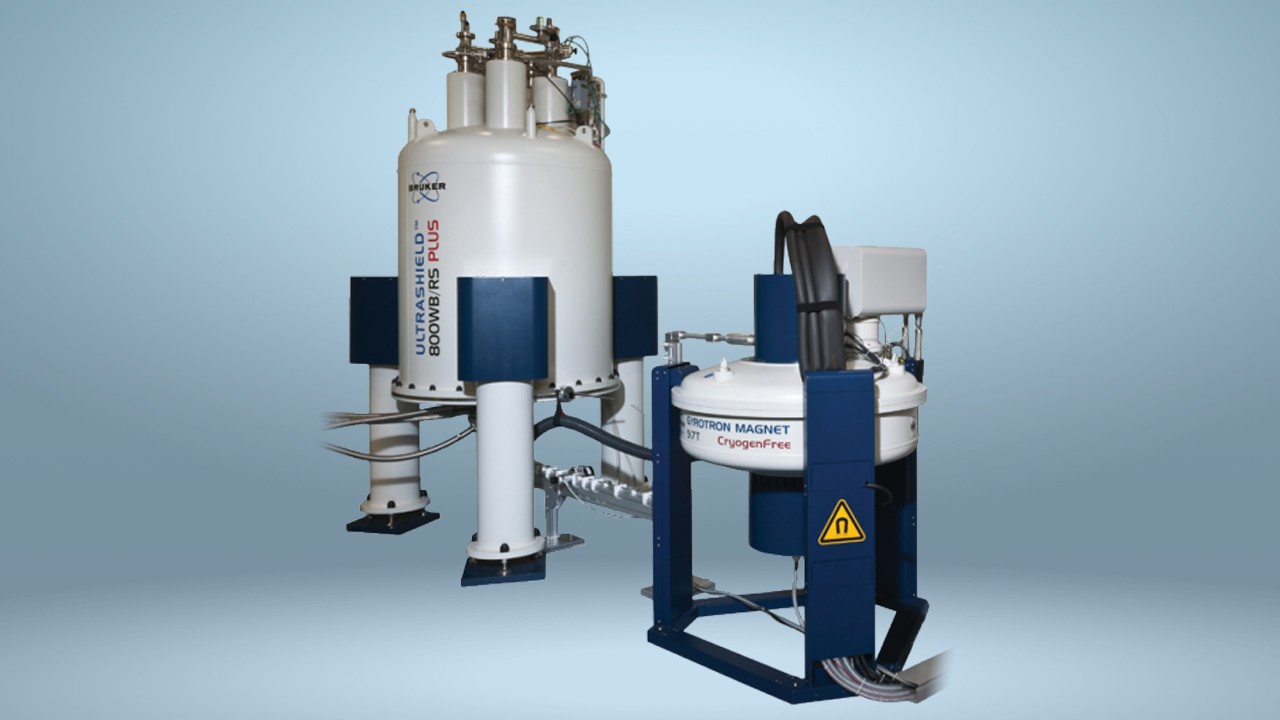

Introduction to Solid-State DNP-NMR
Drug discovery and development relies on the understanding of the intricate structures of chemical compounds. The obtainment of knowledge of certain compounds’ structures can be hindered due to the challenging study of their solid state.
Solid-state nuclear magnetic resonance (NMR) imaging has provided much-needed evaluation of solid-state pharmaceuticals, assisting in the understanding of chemical properties and therapeutic efficacy during drug development and further advancing the overall practice of medicine.
Solid-state NMR is commonly used to analyze drug-drug interactions as well as changes occurring during pharmaceutical formulation. Additionally, NMR provides a thorough look into compounds’ organic structures. The same sample can be reexamined reiteratively since solid-state NMR is non-destructive.
Although NMR remains a potent tool for examining solid-state medicines, it’s notoriously insensitive due to the small magnetic moment of the studied nuclei producing small polarization of the nuclear reservoir. Also, NMR typically requires more samples compared with other imaging techniques.
What is DNP-NMR?
To overcome the sensitivity restrictions posed by standard NMR spectroscopy, the use of dynamic nuclear polarization (DNP) NMR has become an increasingly adopted option. DNP-NMR can be used to bolster NMR signal intensities by transferring Boltzman polarization of the electron spin reservoir.
In addition to boosting the signal intensity, DNP-NMR also significantly accelerates data collection rate during NMR experiments, thereby providing more in-depth and quicker evaluation of the solid state of pharmaceuticals. Thus, DNP-NMR has expanded research in regards to the structural study of pharmaceutical-grade preparations.
Mechanisms: Brief Overview
Spin polarization transfer from electrons to nuclei results in DNP; however, it can also be caused by producing unpaired electrons from radiation damage in solid compounds. Polarization transfers can occur spontaneously via electron-nuclear cross relaxation when electron spin polarization diverges from equilibrium.
One mechanism, the thermal mixing mechanism, involves multiple electrons spins in the polarization transfer. The solid effect mechanism, however, includes magnetization transfer from one electron.
DNP-NMR Spectrometers: Instrumentation
The main components of a high-frequency DNP spectrometer system are as follows:
- Gyrotron oscillator (microwave source)
- NMR probe
- Transmission line (corrugated waveguide)
Probe
DNP-NMR studies that use high-frequency microwave irradiation require mechanical rotation of the sample rotor and the capability to apply B1 fields at both the electron and nuclear Larmor frequencies. Specifically, the probe excites the nuclear spins and detects the NMR signal. The NMR probe is placed into the magnetic field at its center, and the sample is then inserted in the probe to conduct the study.
EPR probes contain large quality factor values that enable the utilization of lower-power microwaves, creating robust B1 fields near the Larmor frequencies. In addition to containing the hardware that controls the sample temperature, the probe also holds the radiofrequency coils that are “tuned” at frequencies that are specific for the nuclei in a given magnetic field.
The Bruker DNP-NMR spectrometer provides the LT MAS Probe and 1.9 mm DNP MAS Probe, both of which support low sample temperatures for successful transfer of polarization from electron to nuclear spins.
Gyrotron Oscillators
The gyrotron oscillator of a DNP-NMR system generates high-power microwave radiation. An annular cathode launches the electron beam and advances it through a superconducting magnet. The beam is compressed when it moves through a vacuum tube and to a resonant cavity. There, it converts transverse kinetic energy into microwaves.
Contrary to slow-wave sources that can be weak in their generation of high levels of power and high frequencies, gyrotrons produce fast-waves that are more suitable for high-field DNP.
Bruker’s gyrotron provides a custom-designed gyrotron tube, control system, and superconducting magnet. The system ensures high-quality microwave beam for reliability and stability in solid-state NMR experiments.
Transmission Line
The transmission line links the gyrotron to the NMR probe, an essential instrument component of DNP-NMR spectrometer systems. Circular, corrugated waveguides are typically used to carry THz power to the sample.
Bruker’s DNP-NMR Spectrometers
The DNP-NMR spectrometers by Bruker provide enhanced sensitivity and shorter signaling duration for solid-state NMR experiments, regardless of the compounds studied. These highly sophisticated devices enable an improved observation of compounds in pharmaceuticals, material science, and biological science by transferring polarization from electron to nuclear spins.
To transfer polarization, the Bruker DNP-NMR spectrometers’ high-power gyrotron systems enhance signals from 20 to a factor of 200 by way of microwave irradiation at 263 GHz, 395 GHz, and 527 GHz. Additionally, these unique spectrometers allow for longer experiments, enabling further study of solids without restrictions on time or safety.
References
- Barnes AB, Paëpe GD, van der Wel PC, et al. High-Field Dynamic Nuclear Polarization for Solid and Solution Biological NMR. Appl Magn Reson. 2008;34(3-4):237-263.
- Ravera E, Luchinat C, Parigi G, et al. Basic facts and perspectives of Overhauser DNP NMR. J Magn Reson. 2016;264:78-87.
- Rosay M, Blank M, Engelke F, et al. Instrumentation for solid-state dynamic nuclear polarization with magic angle spinning NMR. J Magn Reson. 2016;264:88-98.
- Akbey Ü, Oschkinat H. Structural biology applications of solid state MAS DNP NMR. J Magn Reson. 2016;269:213-224.0


